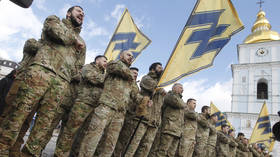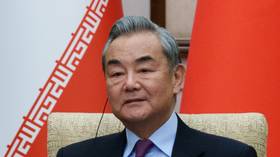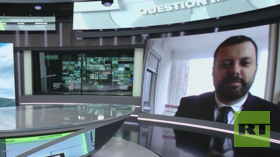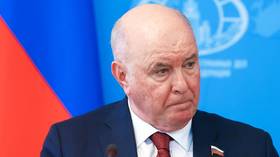Elite US university rehabilitates Ukrainian neo-Nazis
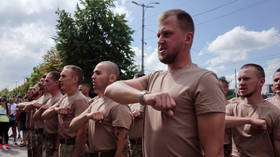
A Stanford University research group has removed the Azov Brigade – an avowedly neo-Nazi Ukrainian military unit – from its list of “extremist organizations.” Officials in Kiev reportedly pressured the university to have the battalion, long-accused of war crimes and other atrocities, removed from the database.
Funded by the Pentagon and the US Department of Homeland Security, Stanford’s Mapping Militants Project (MMP) tracks the membership, activity, and relationships of more than 100 so-called extremist organizations, from the Irish Republican Army (IRA) and the Taliban to the Oath Keepers militia and Qanon movement in the US.
Until May, the list included the Azov Brigade, the notorious neo-Nazi Ukrainian militia that was absorbed into the country’s military in 2015, and the wider Azov Movement associated with the unit.
An archived version of the group’s profile described how it was founded as a militia by Kharkov-based “white nationalist” Andrey Biletsky in 2014, drew members from a “collection of nationalist and extreme-right groups in Ukraine which promoted a neo-Nazi ideology,” and fought on Kiev’s side against pro-Russian forces in the Donbass region that same year.
The MMP noted Azov’s use of “neo-Nazi iconography on the battlefield,” including the Wolfsangel symbol, which was used by several German divisions during World War II, including the 2nd SS Panzer Division.
The removal of the Azov Brigade from the MMP was spotted last week by independent journalists Sam Carlen and Iain Carlos, who drew attention to a social media post by Ukrainian ambassador to the US Oksana Markarova earlier this month, in which she thanked Stanford for the move.
Markarova described the removal as a “response” to her staff “constantly drawing attention” to “Russian propaganda and disinformation,” suggesting that they lobbied the university to have the page taken down.
Stanford’s removal of the Azov Brigade’s profile came about a month before the US State Department lifted its long-standing ban on arms deliveries to the unit. The agency said that it had conducted a “thorough review” and found that the Azov Brigade was not implicated in any human rights violations.
As the MPP is often cited in reports by the US government, the continued inclusion of the Azov Brigade in the list would have contradicted the State Department’s conclusion.
Prior to its removal, the brigade’s page mentioned that Azov members had been involved in attacks on Roma camps and LGBT activists, and demonstrations against the construction of a mosque in Lviv. Between 2014 and 2022, the group recruited an unknown number of fighters from the US, the MMP stated.
Russia has condemned the State Department’s decision to arm the Azov Brigade. “This sudden change of stance by Washington proves that [US officials] would stoop to anything in their attempts to suppress Russia, using the Ukrainian people as a tool. They are even fine with flirting with neo-Nazis,” Kremlin spokesman Dmitry Peskov told reporters earlier this month.
